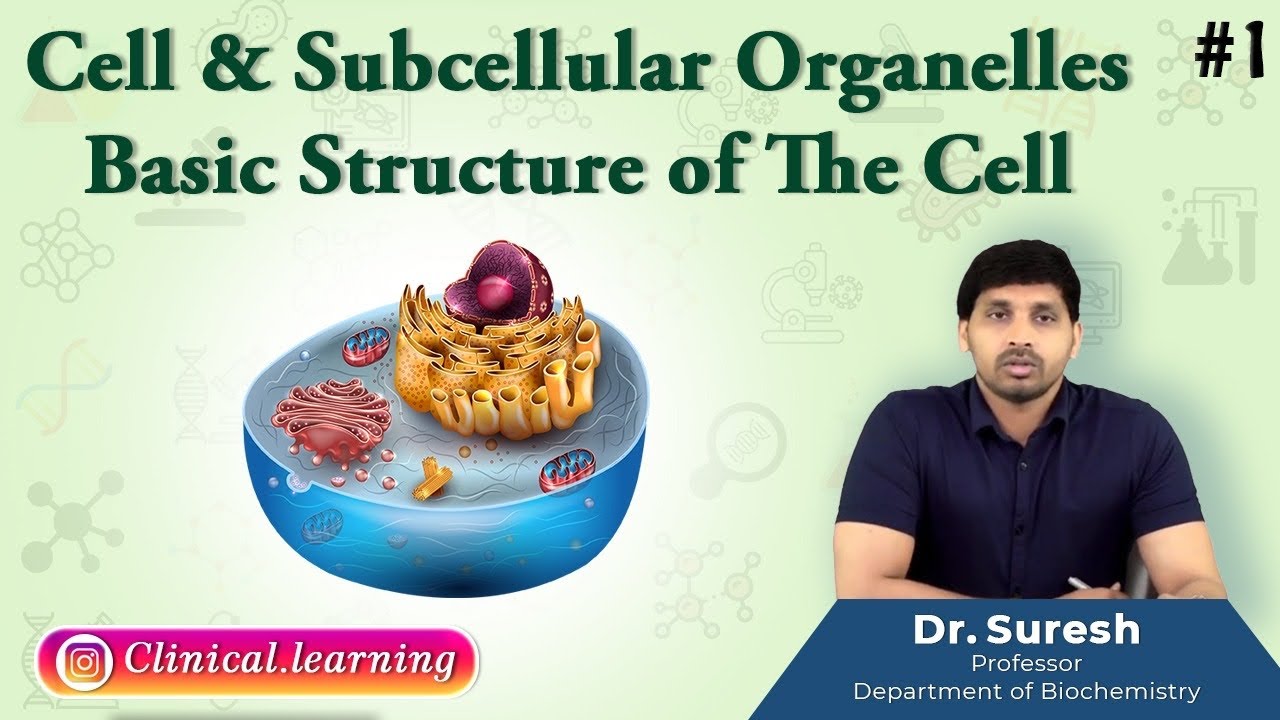A Level Biology - 2.1.1.7 - Prokaryotic Cells Summary
Summary
TLDRThis video provides a comprehensive overview of prokaryotic cells, primarily focusing on their structure and differences from eukaryotic cells. Key features include the absence of a nucleus, membrane-bound organelles, and smaller ribosomes, along with the presence of a cell wall made of peptidoglycan. It explains the process of binary fission for cell division and highlights additional structures like plasmids and flagella that aid in functions such as movement and genetic exchange. A comparison table reinforces these differences, enhancing understanding for A-level biology students preparing for exams.
Takeaways
- 😀 Prokaryotic cells, like bacteria, are simpler than eukaryotic cells and lack a nucleus.
- 😀 Key features of prokaryotic cells include a plasma membrane, cytoplasm, DNA, RNA, and ribosomes.
- 😀 Prokaryotic cells are generally smaller (0.2 to 2 micrometers) compared to eukaryotic cells (10 to 100 micrometers).
- 😀 Unlike eukaryotic cells, prokaryotic cells do not have membrane-bound organelles.
- 😀 Prokaryotic cell walls are made of peptidoglycan, whereas plant and fungal cell walls are made of cellulose and chitin, respectively.
- 😀 Prokaryotic cells have smaller ribosomes (70s) compared to the larger ribosomes (80s) found in eukaryotic cells.
- 😀 DNA in prokaryotic cells is a single, naked loop, while eukaryotic DNA is organized into multiple linear chromosomes associated with histones.
- 😀 Prokaryotic cells reproduce through binary fission, which involves splitting one cell into two after DNA replication.
- 😀 Some prokaryotic cells may have additional structures like capsules, plasmids, flagella, and pili for protection, genetic exchange, movement, and adhesion.
- 😀 A useful study technique is to create a summary table comparing prokaryotic and eukaryotic cells to reinforce key differences and similarities.
Q & A
What are prokaryotic cells and how do they differ from eukaryotic cells?
-Prokaryotic cells, such as bacteria, are simpler and smaller than eukaryotic cells. They lack a nucleus and membrane-bound organelles, while eukaryotic cells have a defined nucleus and more complex structures.
What are the main components of a typical prokaryotic cell?
-A typical prokaryotic cell includes a cell wall, plasma membrane, cytoplasm, ribosomes, and DNA. Some may also have structures like pili, flagella, and capsules.
What is the function of the cell wall in prokaryotic cells?
-The cell wall provides structural support and protection. In prokaryotes, it is primarily made of peptidoglycan.
What is binary fission and how does it differ from mitosis?
-Binary fission is the process by which prokaryotic cells divide, resulting in two identical cells. Unlike mitosis, which involves multiple phases and results in two daughter cells with a full set of chromosomes, binary fission is simpler and quicker.
What are plasmids and why are they significant?
-Plasmids are small, circular loops of DNA found in some prokaryotic cells. They often carry genes for traits like antibiotic resistance, making them important for bacterial adaptability and survival.
How do ribosomes in prokaryotic cells differ from those in eukaryotic cells?
-Ribosomes in prokaryotic cells are smaller (70S) compared to those in eukaryotic cells (80S). This difference in size is a key distinction between the two cell types.
What role do pili play in prokaryotic cells?
-Pili are hair-like projections that help prokaryotic cells adhere to surfaces and facilitate the transfer of plasmids between cells, contributing to genetic exchange.
What is the significance of the DNA structure in prokaryotic cells?
-Prokaryotic DNA is typically a single loop of naked DNA, not associated with histones, which allows for quicker replication and simpler organization compared to the multiple linear chromosomes in eukaryotic cells.
What materials are the cell walls made of in different types of cells?
-In prokaryotic cells, the cell wall is made of peptidoglycan; in plant cells, it's cellulose; and in fungal cells, it's chitin.
How does the cytoskeleton of prokaryotic cells compare to that of eukaryotic cells?
-Prokaryotic cells have a less well-developed cytoskeleton compared to eukaryotic cells, which have a complex cytoskeleton with multiple components that provide structure and support.
Outlines

This section is available to paid users only. Please upgrade to access this part.
Upgrade NowMindmap

This section is available to paid users only. Please upgrade to access this part.
Upgrade NowKeywords

This section is available to paid users only. Please upgrade to access this part.
Upgrade NowHighlights

This section is available to paid users only. Please upgrade to access this part.
Upgrade NowTranscripts

This section is available to paid users only. Please upgrade to access this part.
Upgrade NowBrowse More Related Video

Introduction to Prokaryotic Cells | A-level Biology | OCR, AQA, Edexcel

Sel: Prokariotik vs Sel Eukariot | Biologi | Alternatifa

All of AQA BIOLOGY Paper 1 in 25 minutes - GCSE Science Revision

La cellula procariotica

Understanding Cell Functions in the Human Body.

1. Cell & Subcellular Organelles - BASIC STRUCTURE OF THE CELL
5.0 / 5 (0 votes)